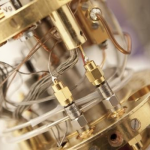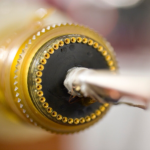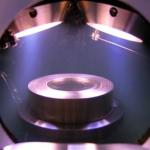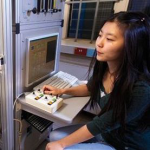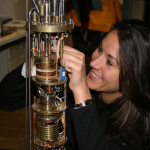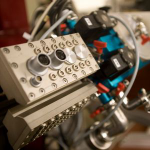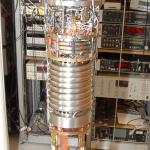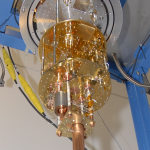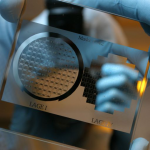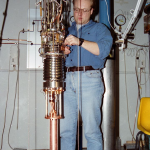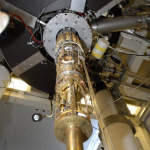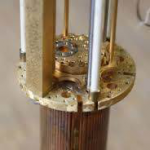The Josephson effect is perhaps the prototypical manifestation of macroscopic phase coherence, and forms the basis of a widely used electronic interferometer—the superconducting quantum interference device (SQUID). In 1965, Maki and Griffin predicted that the thermal current through a temperature-biased Josephson
tunnel junction coupling two superconductors should be a stationary periodic function of the quantum phase difference between the superconductors: a temperature-biased SQUID should therefore allow heat currents to interfere resulting in a thermal version of the electric Josephson interferometer. This phase-dependent mechanism of thermal transport has been the subject of much discussion but, surprisingly, has yet to be realized experimentally. Here we investigate heat exchange between two normal metal electrodes kept at different temperatures and tunnel-coupled to each other through a thermal ‘modulator’ (ref. 5) in the formof a direct current SQUID. We find that heat transport in the system is phase dependent, in agreementwith the original prediction.Our Josephson heat interferometer yields magnetic-flux-dependent temperature oscillations of up to 21 millikelvin in amplitude, and provides a lux-to-temperature transfer coefficient exceeding 60 millikelvin per flux quantum at 235 millikelvin. In addition to confirming the existence of a phase-dependent thermal current unique to Josephson junctions, our results point the way towards the phasecoherent manipulation of heat in solid-state nanocircuits.
|
